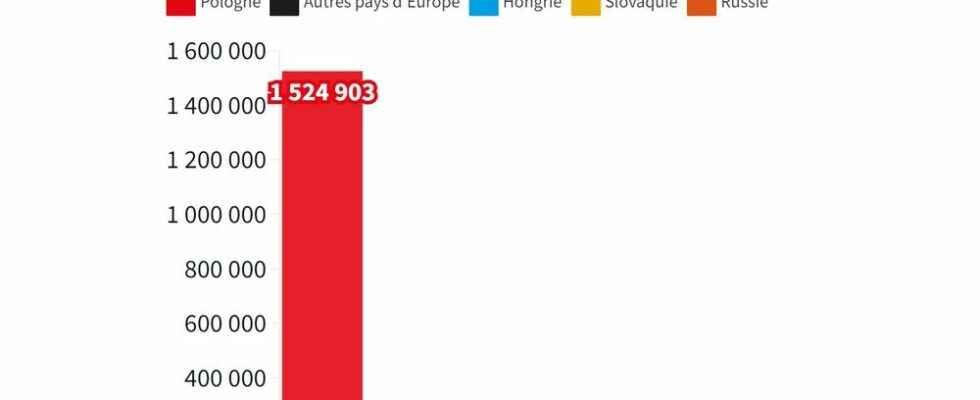Europe is facing its biggest refugee crisis since 1945. The formula has been repeated many times in recent days, but it is the repetition of the images filmed at the Polish border that best demonstrates it. Shopping bags stuffed with food and a few clothes on their arms, Ukrainian refugees have been congregating at the Polish border since the start of the war, which began on February 24.
Above all, we see mothers dragging incredulous children. Faced with the human tragedy, European countries have decided to respond massively by opening borders and welcoming displaced people. First strong decision: the activation of the European temporary protection mechanism. All Ukrainian nationals can thus join the European Union without a visa and have access to healthcare and the labor market.
Countries adapt their reception arrangements on their territories on a case-by-case basis. Bill in Poland, free trains in Germany, emergency accommodation in France, vaccination against Covid-19 in Italy… The answers are as diverse as they are numerous. This situation leads to unequal treatment. Bordering countries such as Poland or Hungary are the states that host the most refugees. More than 1.5 million people migrated to Poland, around 225,000 to Hungary and 176,000 to Slovakia. Conversely, the further one moves away from Ukraine, the fewer displaced persons take refuge in these States.
The countries hosting the most Ukrainian refugees.
Flourish
If you are not viewing this infographic, click here.
In total, out of all the countries of Europe, rather located in the West, 282,000 people were welcomed, detailed the United Nations High Commissioner for Refugees on Friday. Among them, Germany had registered more than 80,000 Ukrainian refugees as of Wednesday. If France says it wants to welcome 100,000 people, only 7,500 refugees have entered the territory. The Czech Republic is probably the Central European country that is home to the most Ukrainians today. The point country by country.
The distribution of Ukrainian refugees in Europe.
Flourish
If you are not viewing this infographic, click here.
Poland is both the first and the country that has received the most Ukrainians so far. Of the 2.5 million displaced, Warsaw supports more than half. It is at the heart of the migration crisis. A huge squadron of volunteers mobilized from the first days of the conflict to provide food, blankets and health care.
On the political level, the Parliament intends to adopt a bill which grants the right of residence to Ukrainians for 18 months. The power would release financial aid to local authorities and the families who welcome them.
The Minister of the Interior, Gérald Darmanin, announced the support of 7,500 Ukrainian nationals. The government has also set up a website to connect charities with families offering accommodation. France is preparing to receive at least 100,000 refugees in the coming weeks.
Free trains, food distribution, immediate access for children to schools… Germany has been active on the humanitarian front. The country led by Olaf Scholz recorded the arrival of 80,000 Ukrainians. The country immediately opened access to work to new arrivals.
Italy was already home to one of the largest Ukrainian communities in Europe before the war. It will be reinforced with the arrival already recorded of 20,000 refugees. Rooms in hotels that had been used a few months earlier to enforce quarantine on positive travelers during the Covid crisis are reserved for them. The number of arrivals in Italy could be much higher in the coming months. By then, Ukrainians have been tested for Covid-19 and a dose of vaccine has been offered to those who were not immune.
In the middle of the week, the Interior Ministry said that this country had already taken in more than 100,000 refugees since the Russian offensive. Like Italy, the Czech Republic has a large Ukrainian diaspora of over 197,000 people. The country has shown itself to be particularly reactive in offering immediate property rights to the displaced.
For a government that has built all its credibility on its anti-immigrant policy, Hungary has been very generous since the start of the crisis. Tens of thousands of Ukrainians are heading to Hungary, where the government and society are organizing to receive 255,000 people, according to the latest UNHCR figures.
In 2015, during the migration crisis linked to the war in Syria, the country stood out for its reluctance to welcome refugees. Seven years later, Hungary and Europe have changed their migration policy and it was instantly in working order.
